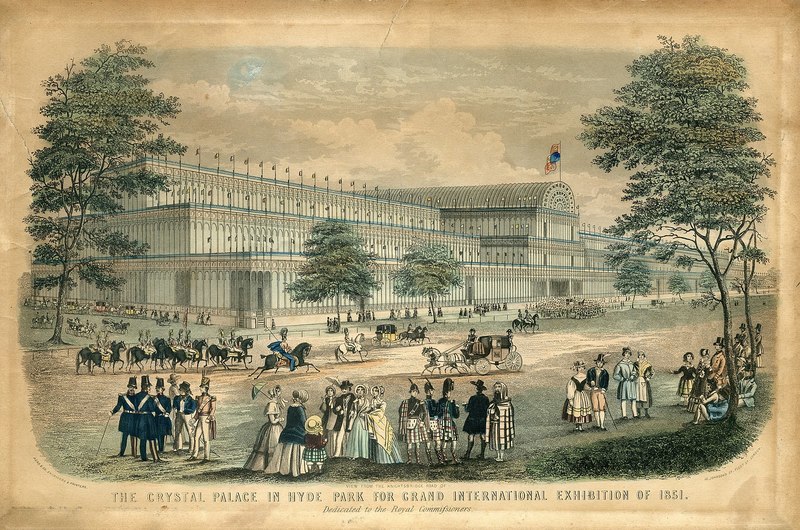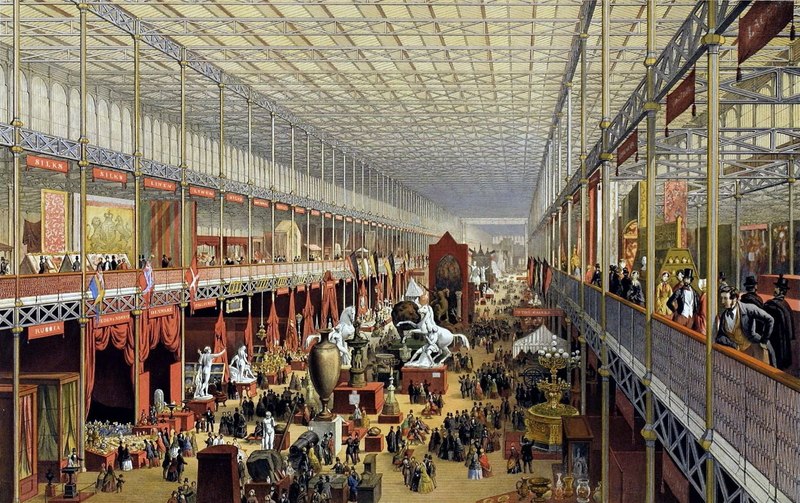The Great Exhibition of 1851
On May 1st, 1851, The Great Exhibition opened in London, England. With the Queen and Prince Albert attending the grand opening, many traveled quite a distance to see all that the Crystal Palace had to offer. The Great Exhibition was a place to show new technologies and advancements, as well as to give a chance for Britain to see other nations' goods and cultures. It included musical instruments, building technology, military technology, and textiles from around the world.
While the Great Exhibition’s purpose was to bring nations together, the overall extravagance of the Crystal Palace also signified British superiority. With such a grand scale exhibition shows that Britain was truly confident in their political and economic structure. This, paired with the way other nations were shown off, led to further exoticism of many nations. While things such as foreign cuisine were more normalized and sought after in the years following the Great Exhibition, they were done from a point of consumerism, rather than for the purpose of blending cultures together.
The Great Exhibition was highly tied to capitalism, as Britain aimed to create ties between other nations, and turn Britain into a centre for global trade. The opening and success of the Crystal Palace signified that Britain was becoming a mature capitalist society, and wanted to create a capitalist world that was centered around Britain and its greatness.
The Great Exhibition also created further class divide within Britain, as it emphasized a lifestyle centered around luxury, elegance, and overconsumption. Those who were part of the working class, and only paid enough to afford basic necessities, were looked down upon for not fitting into the mould of British excellency and superiority. This is especially seen when looking at “shilling day,” as those who could only afford to enter on this day were further shamed for their dress and manners, despite being the ones who built and made the vision of the Crystal Palace possible.
While the construction of the Crystal Palace alone signals great technological advancements, and its contents tries to show a world coming together under one roof, it is important to view artifacts of the Great Exhibition not as complete truth, but as something to inform us of Britain’s view of themselves and other nations.

